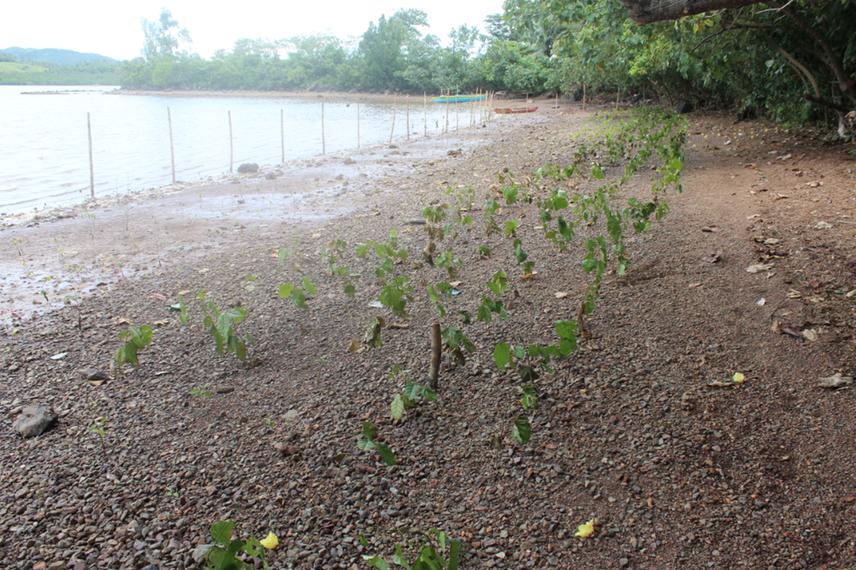Teodoro Lugo Licarte
Generally, this proposed project is aimed to rehabilitate the degraded mined out areas in the municipalities of Jose Panganiban and Paracale in Camarines Norte, Philippines using the potential natural vegetation technique.
This proposed project focuses on three development perspectives, such as –social development –improvement of environmental health -and to some extent, additional income for the local people.

View of the project site after planting.
One of the key result areas of this proposed project is the inculcation of the environmental awareness among people in two mining municipalities in the province of Camarines Norte, Philippines. This will be done through community organizing and development works in the chosen sites. Alternative livelihood is not considered an option considering that there is still no livelihood option that equates the value of mining in the locality. Thus, the envisioned outcome of this proposed project is a paradigm shift from irresponsible mining to mining with environmental consideration.
Another target outcome of this proposed project is the reforestation using the concept of natural selection. This is a dense planting of endemic species with 2-3 seedlings per square meter and using a thick mulch of rice straws to minimize maintenance activities. Species to be used are included in the Red List of the International Union for the Conservation of Nature. This method is not commonly used in the Philippines, but it will be introduced as new technology in the field of rehabilitation of degraded lands, specifically the mined out areas – both upland and mangrove forest.
One important aspect of this proposed project, which is not commonly used in the implementation of reforestation/afforestation activities in the country, is the phyto-sociological survey and the ecological monitoring. The former activity will determine the potential natural vegetation of the project area. This will be used in the proper selection of the combination of species to be planted in the proposed sites. The latter activity will project the growth and yield of the established plantation. These two activities will provide scientific data to determine the importance of the natural vegetation technique in the ecological succession of degraded lands –abandoned mine sites in this case.